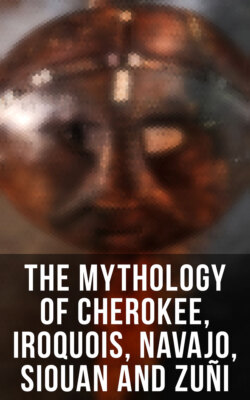Читать книгу The Mythology of Cherokee, Iroquois, Navajo, Siouan and Zuñi - James Mooney - Страница 84
На сайте Литреса книга снята с продажи.
Serpent-Worship
ОглавлениеProbably more ponderous nonsense has been written about the worship of reptiles ('ophiolatry,' as the mythologists of half a century ago termed it) than upon any other allied subject. But, this notwithstanding, there is no question that the serpent still holds a high place in the superstitious regard of many peoples, Asiatic and American. As we have already seen, it frequently represents the orb of day, and this is especially the case among the Zuñi and other tribes of the southern portions of North America, where sun-worship is more usual than in the less genial regions. With the Red Man also it commonly typified water. The sinuous motion of the reptile sufficiently accounts for its adoption as the symbol for this element. And it would be no difficult feat of imagination for the savage to regard the serpent as a water-god, bearing in mind as he would the resemblance between its movement and the winding course of a river. Kennebec, the name of a stream in Maine, means 'snake,' and Antietam, a creek in Maryland, has the same significance in the Iroquois dialect. Both Algonquins and Iroquois believed in the mighty serpent of the Great Lakes. The wrath of this deity was greatly to be feared, and it was thought that, unless duly placated, he vented his irascible temper upon the foolhardy adventurers who dared to approach his domain by raising a tempest or breaking the ice beneath their feet and dragging them down to his dismal fastnesses beneath.
